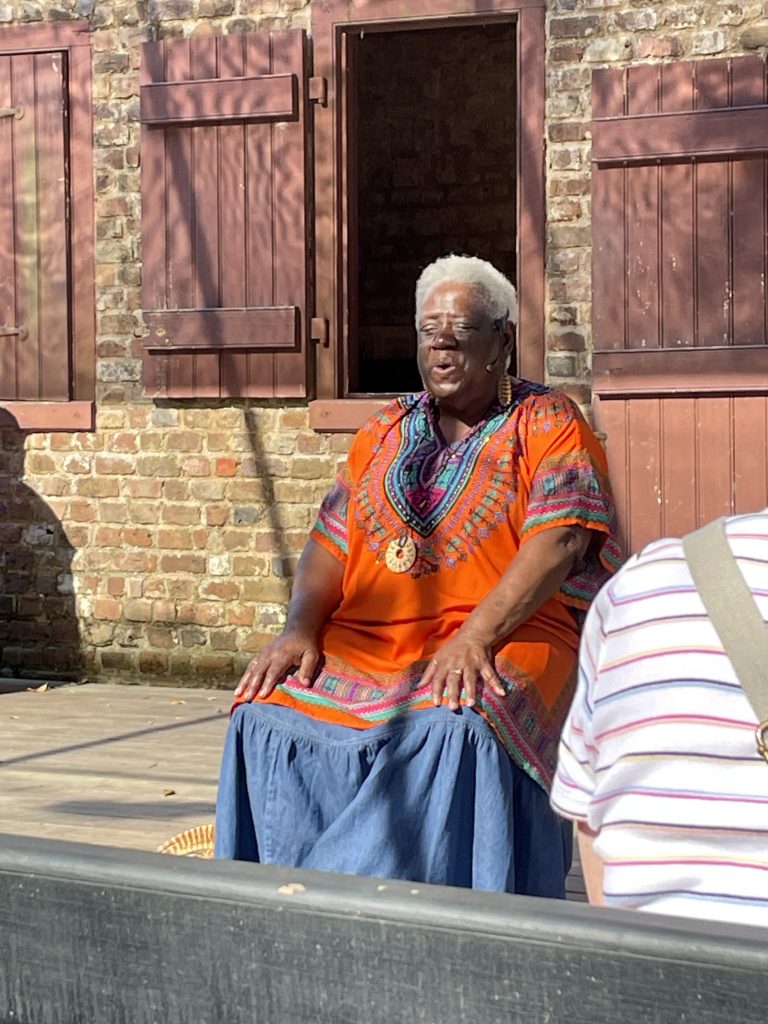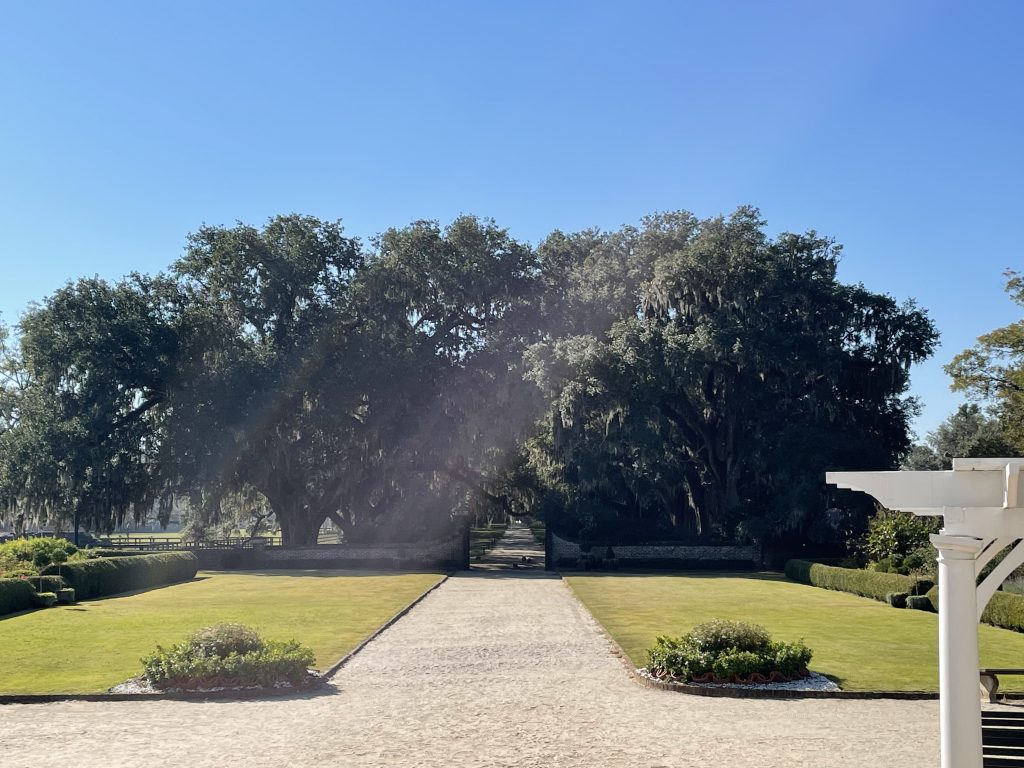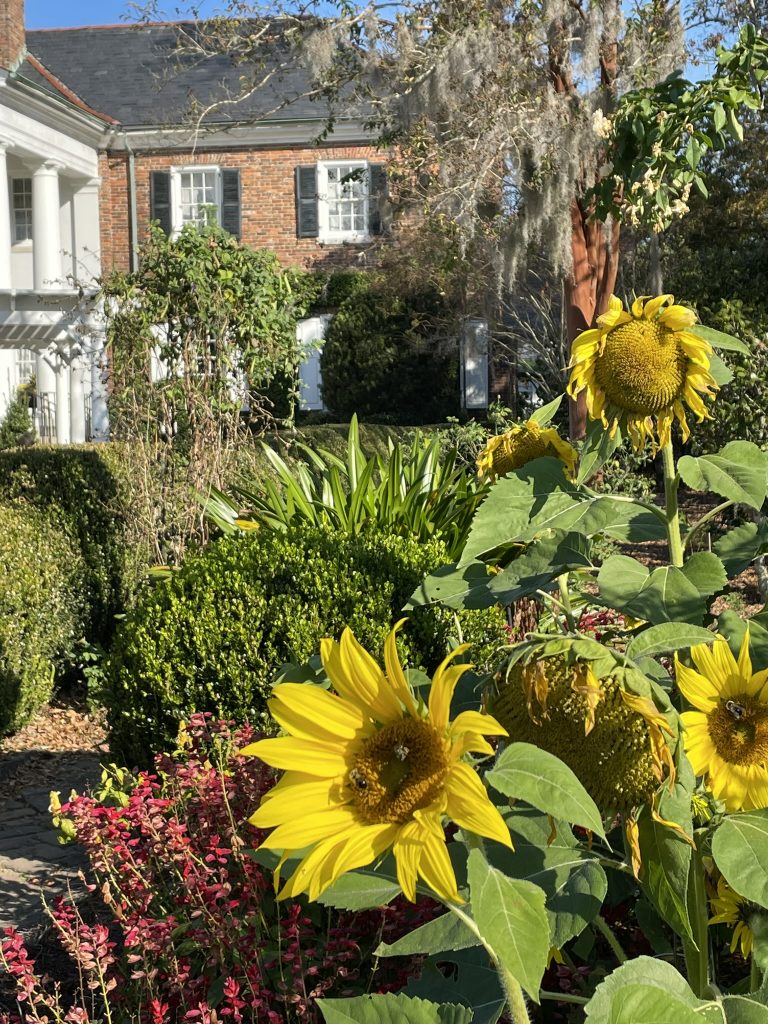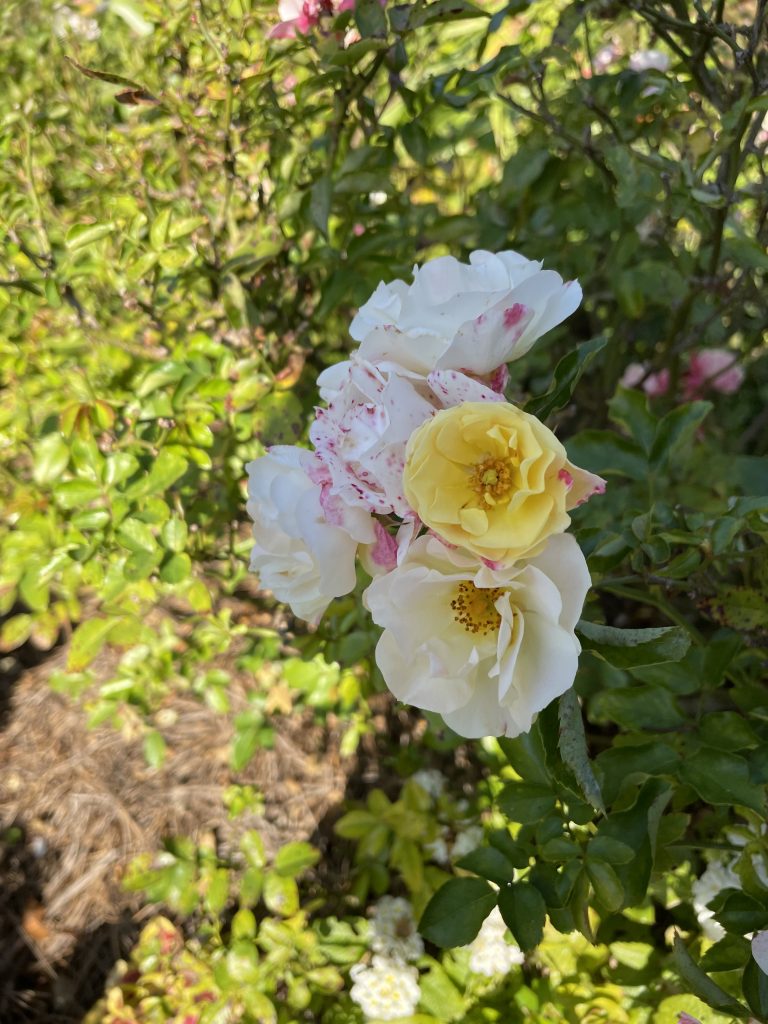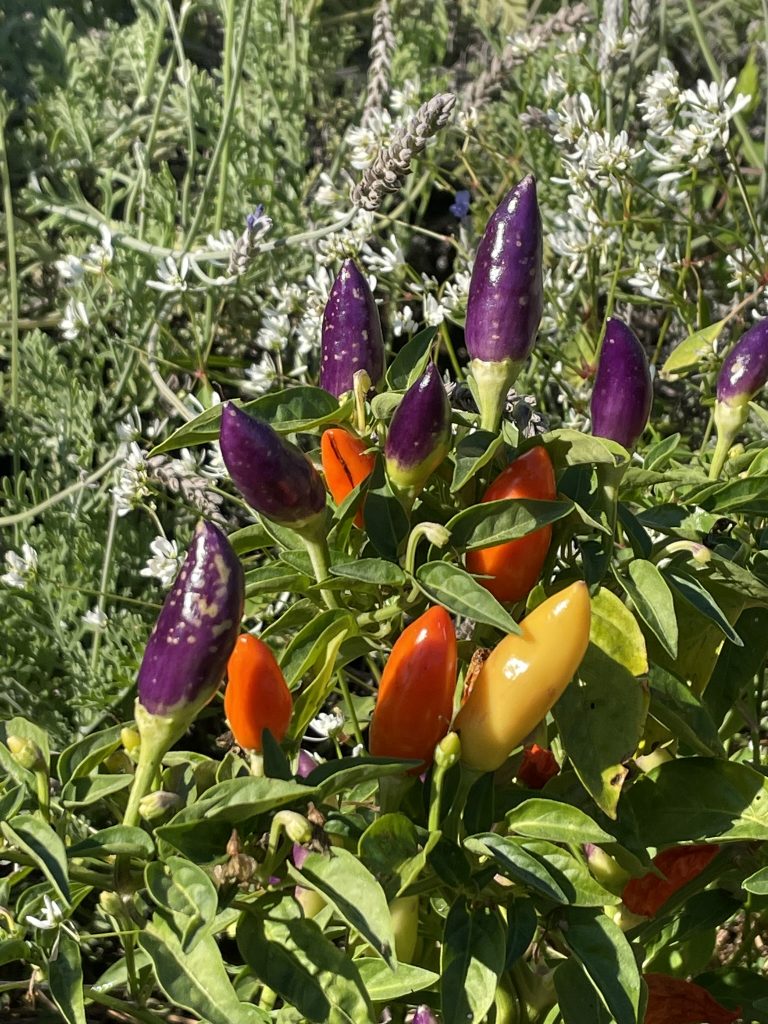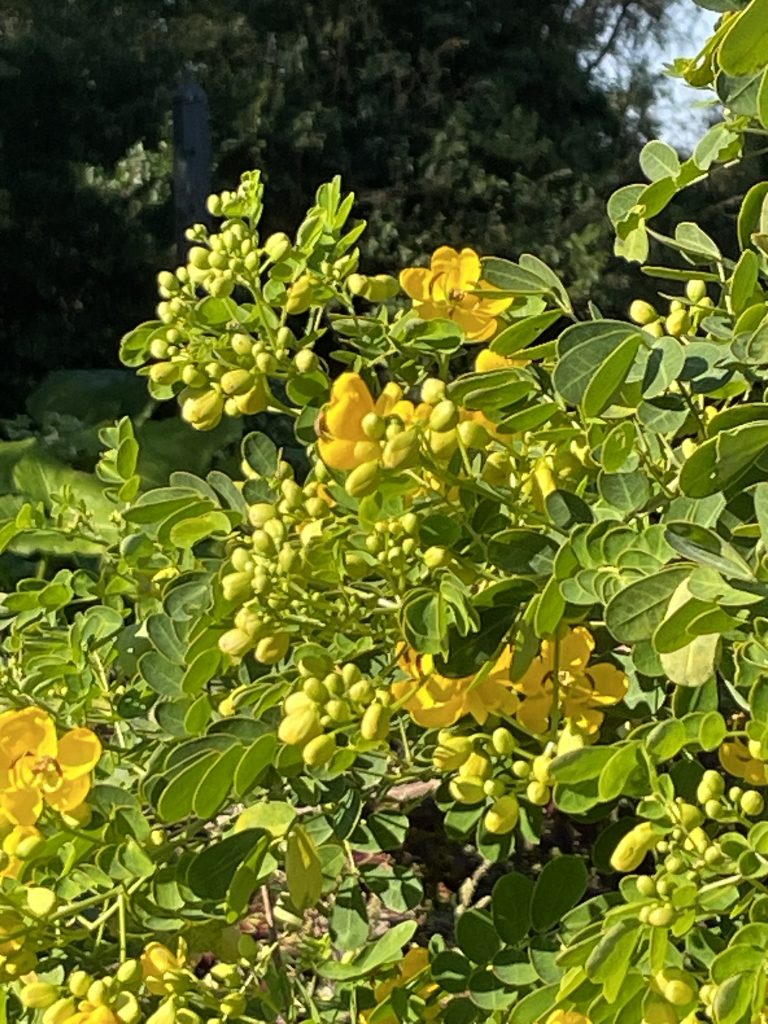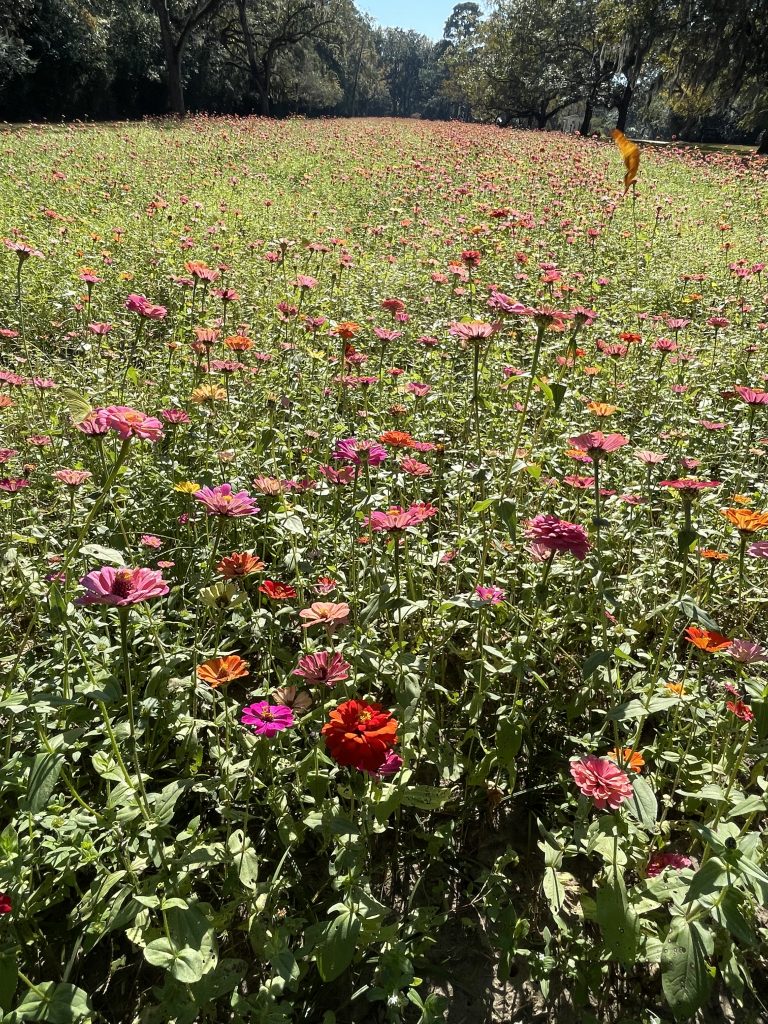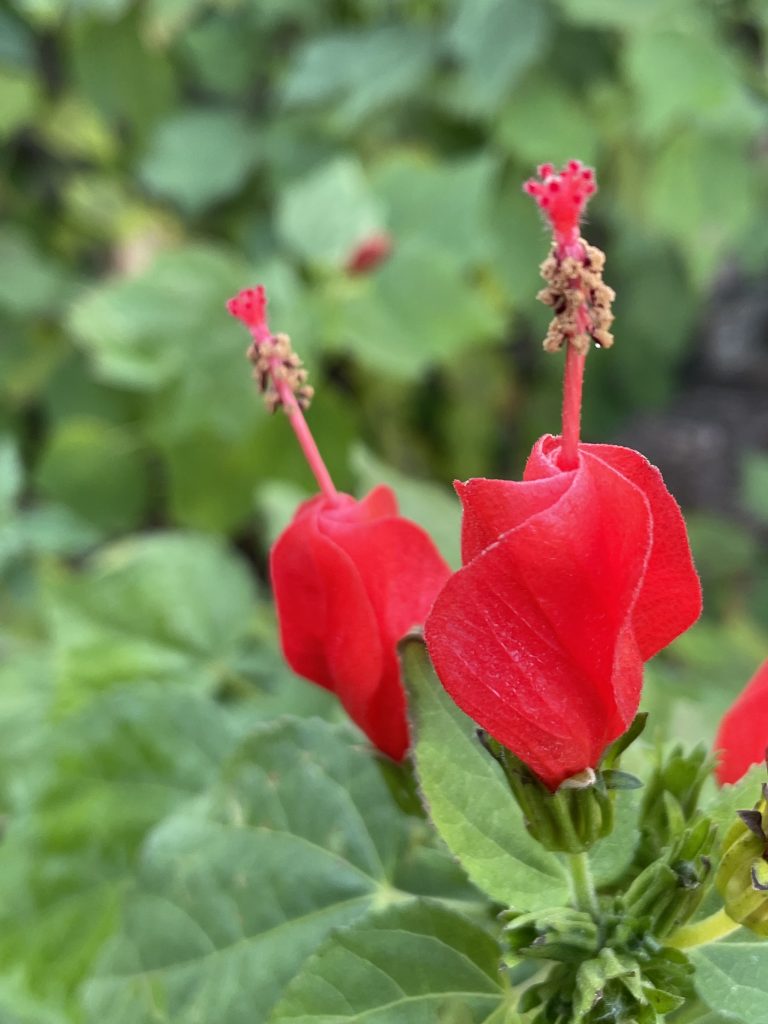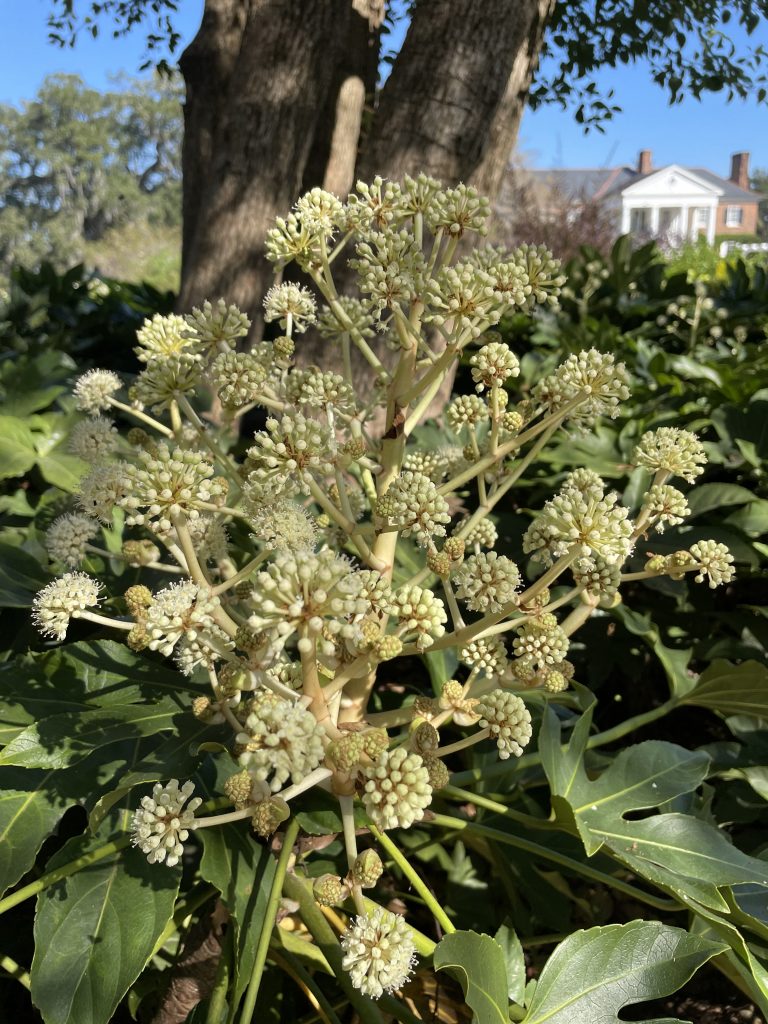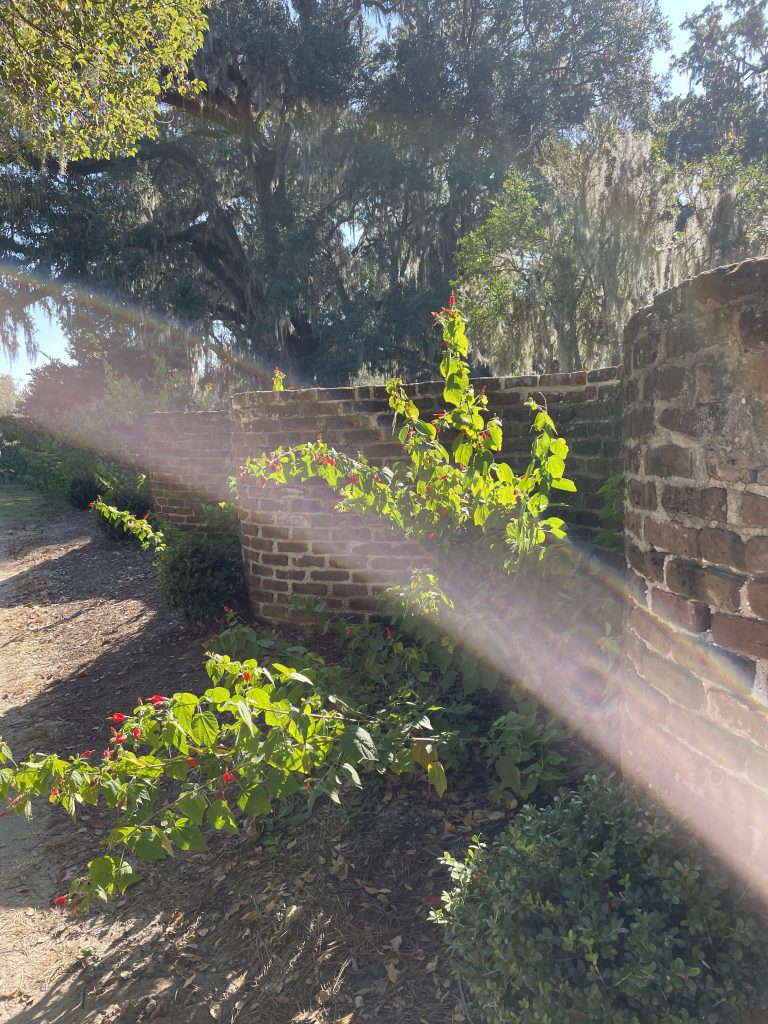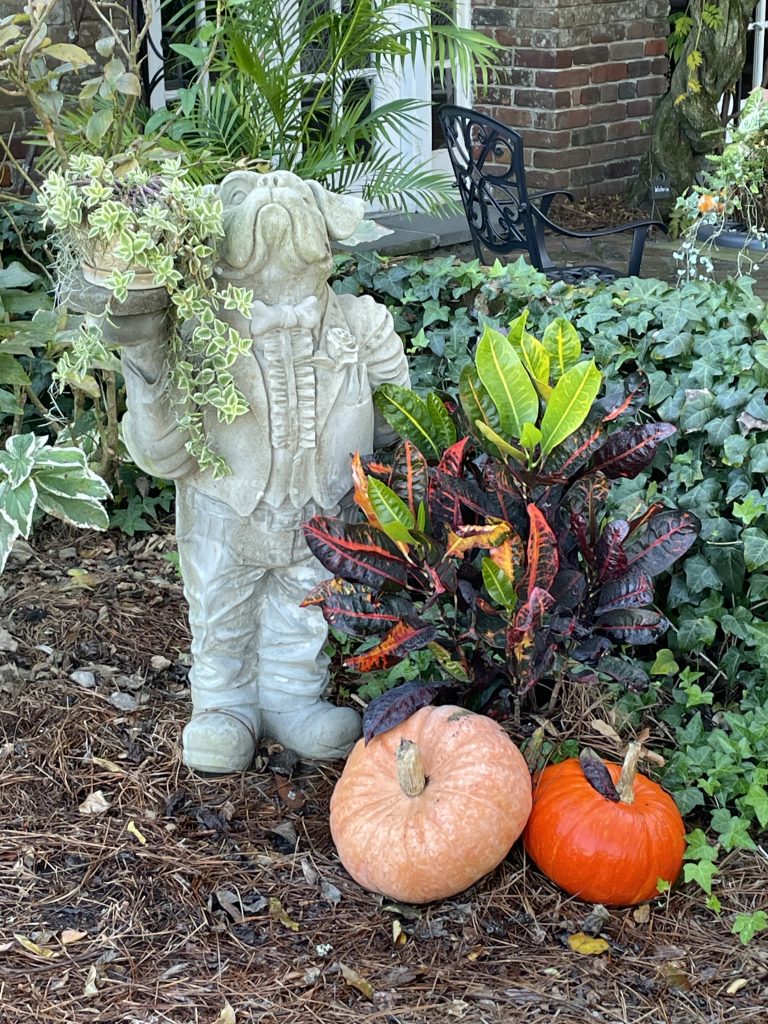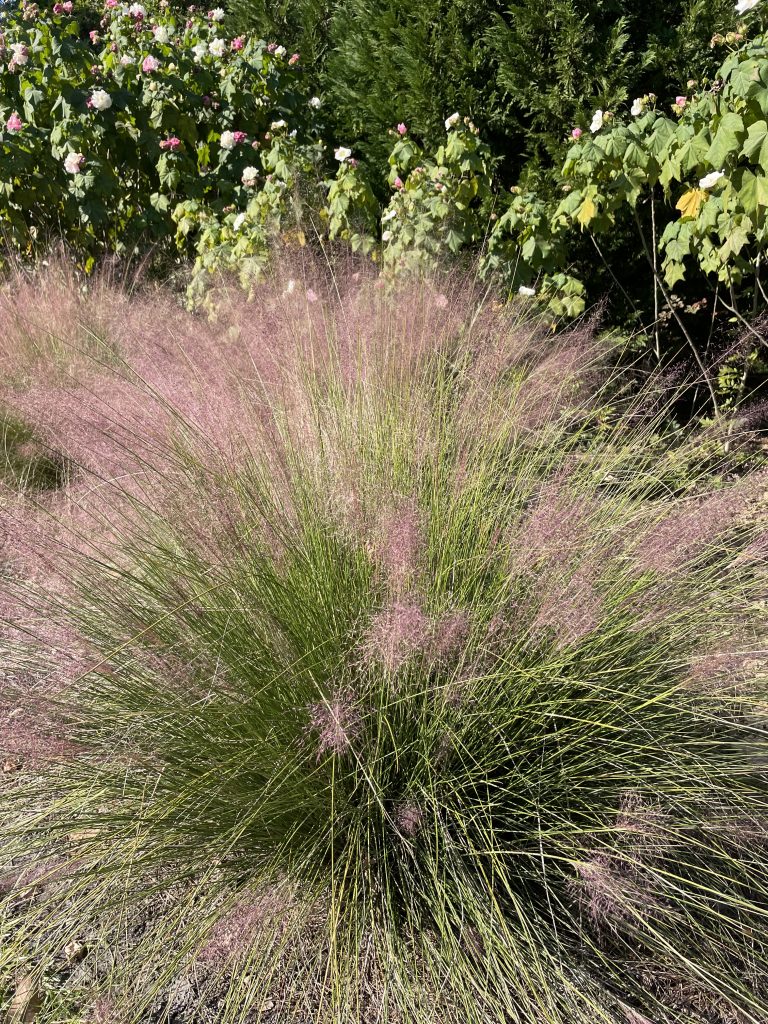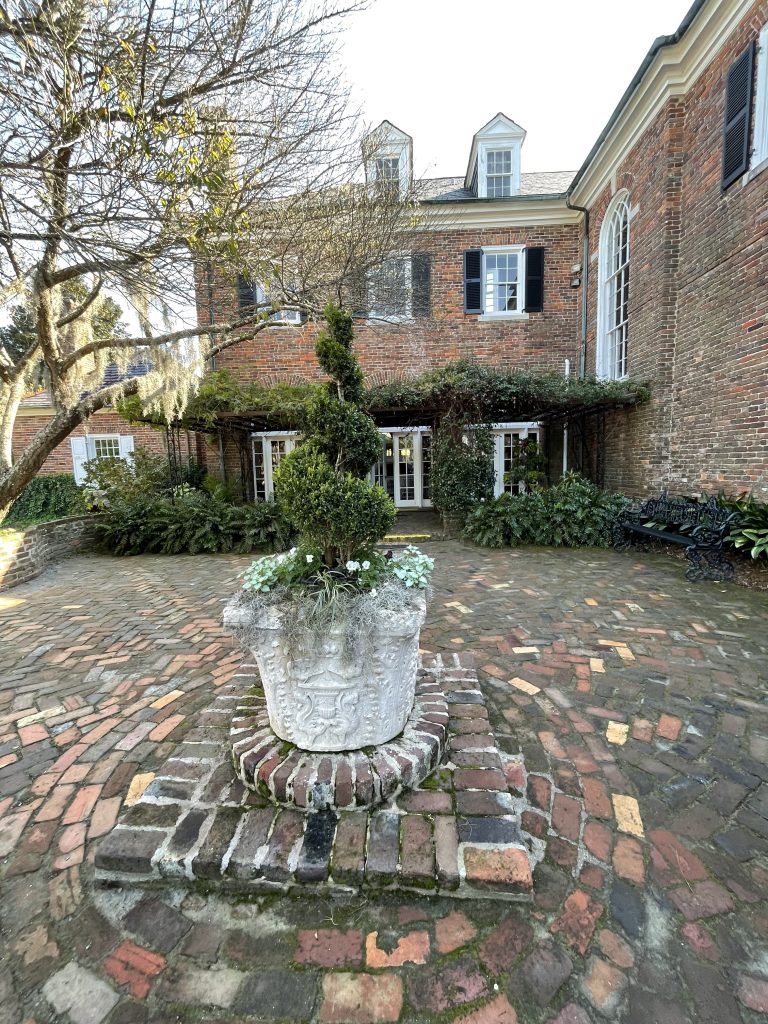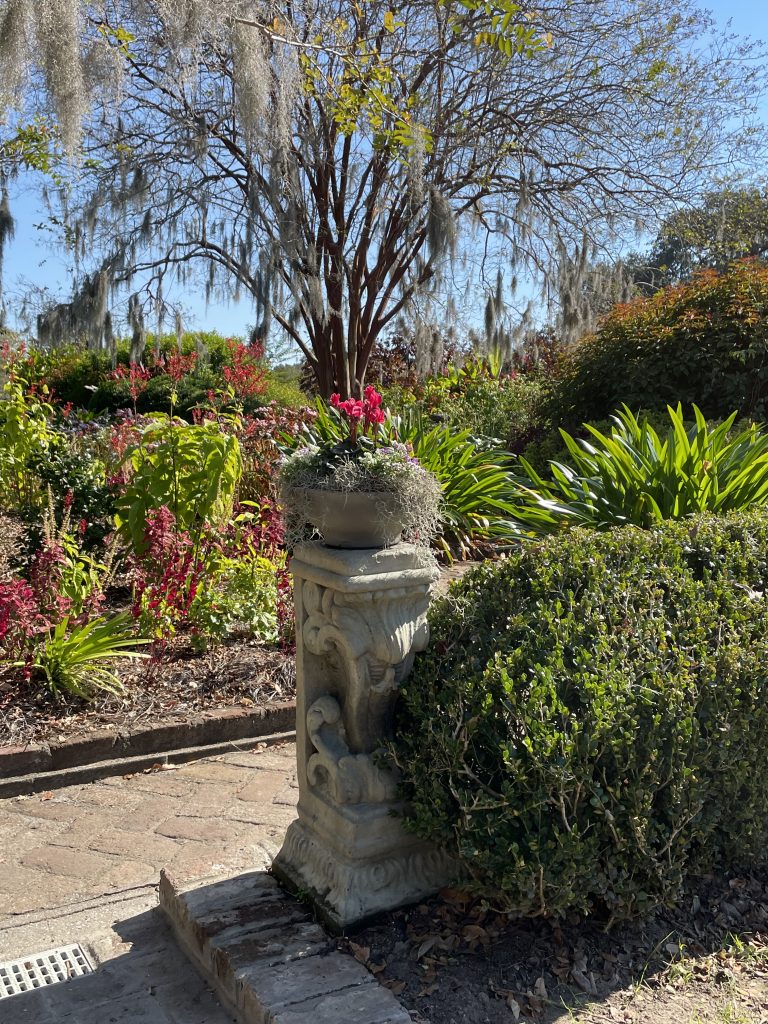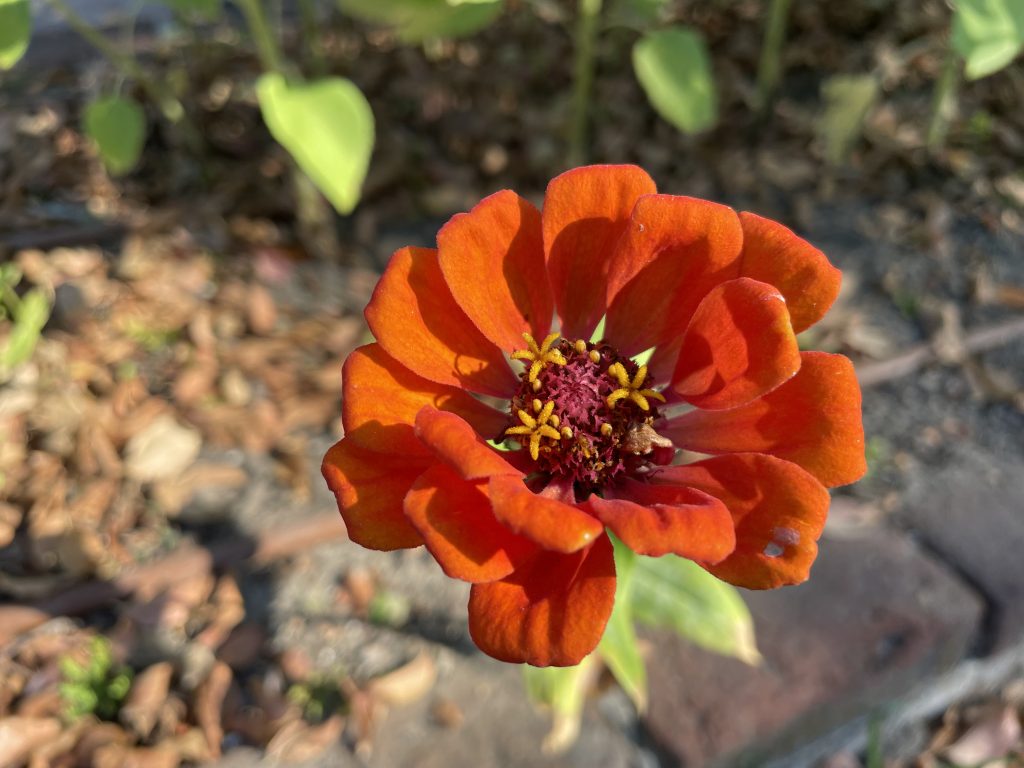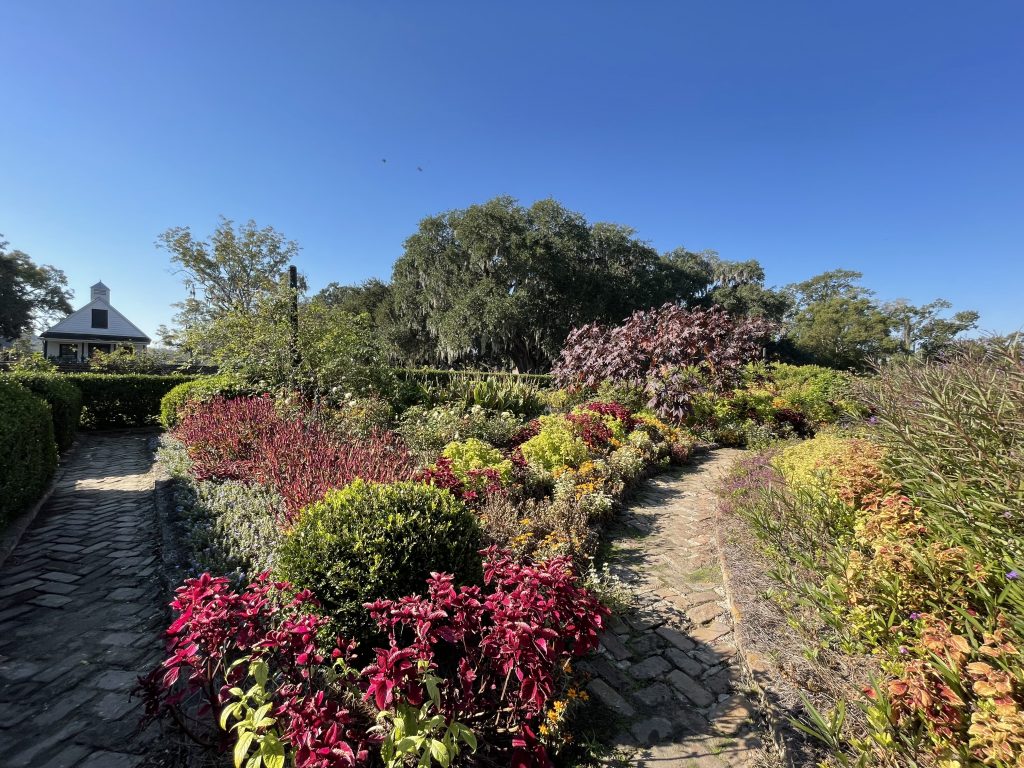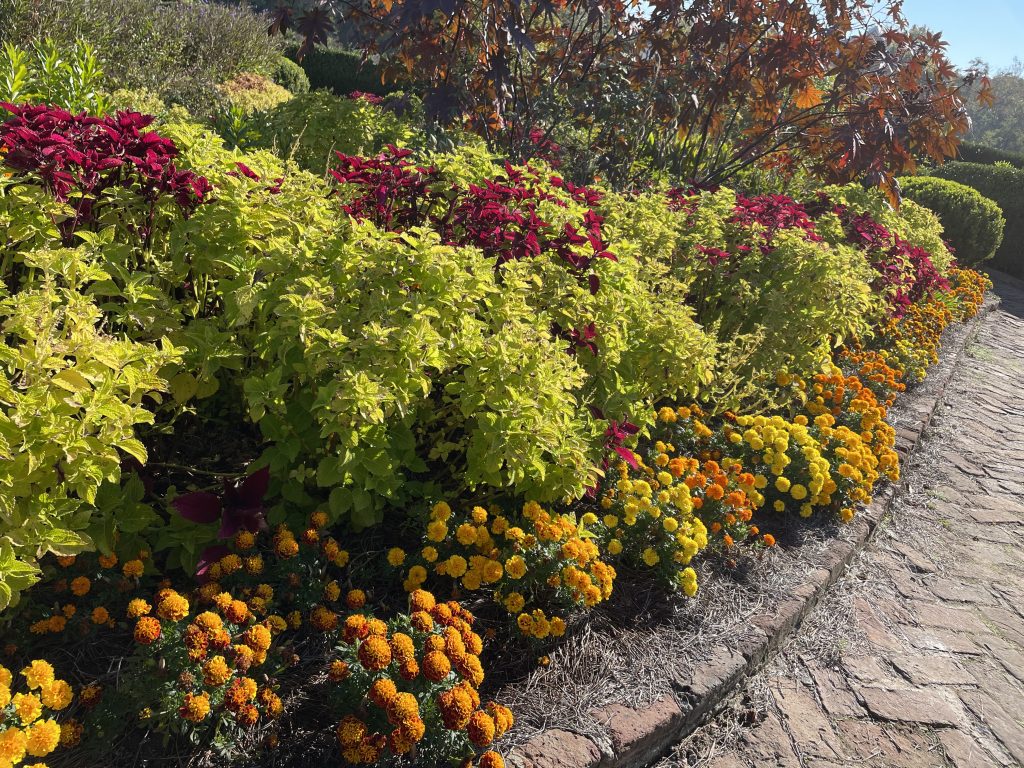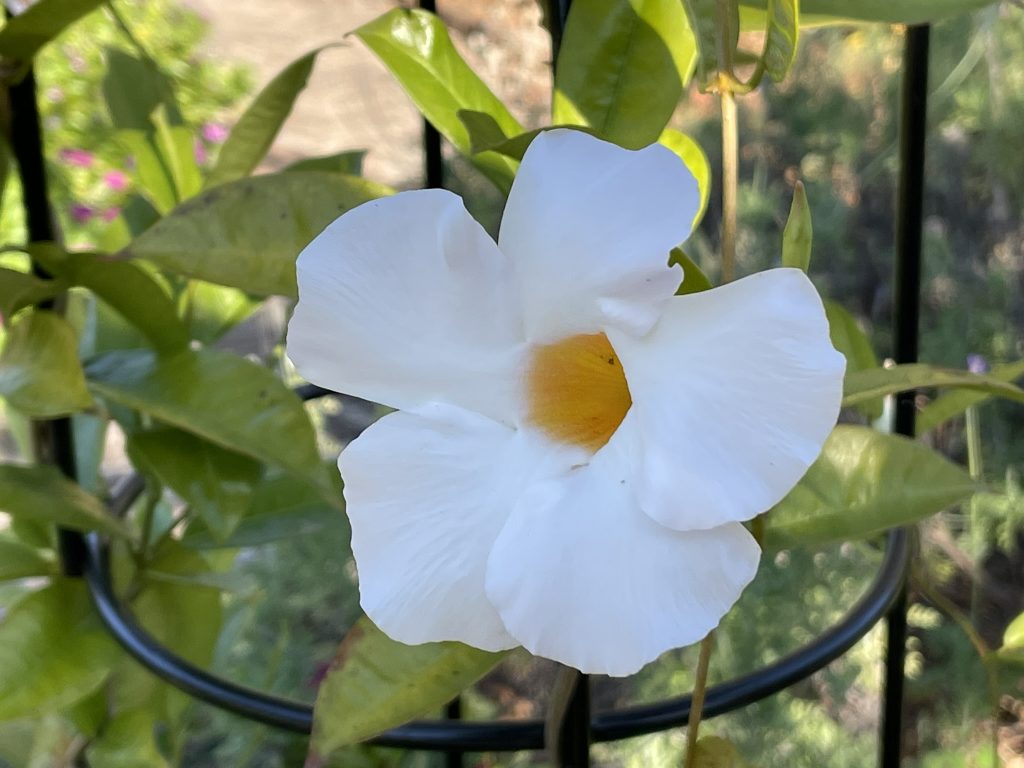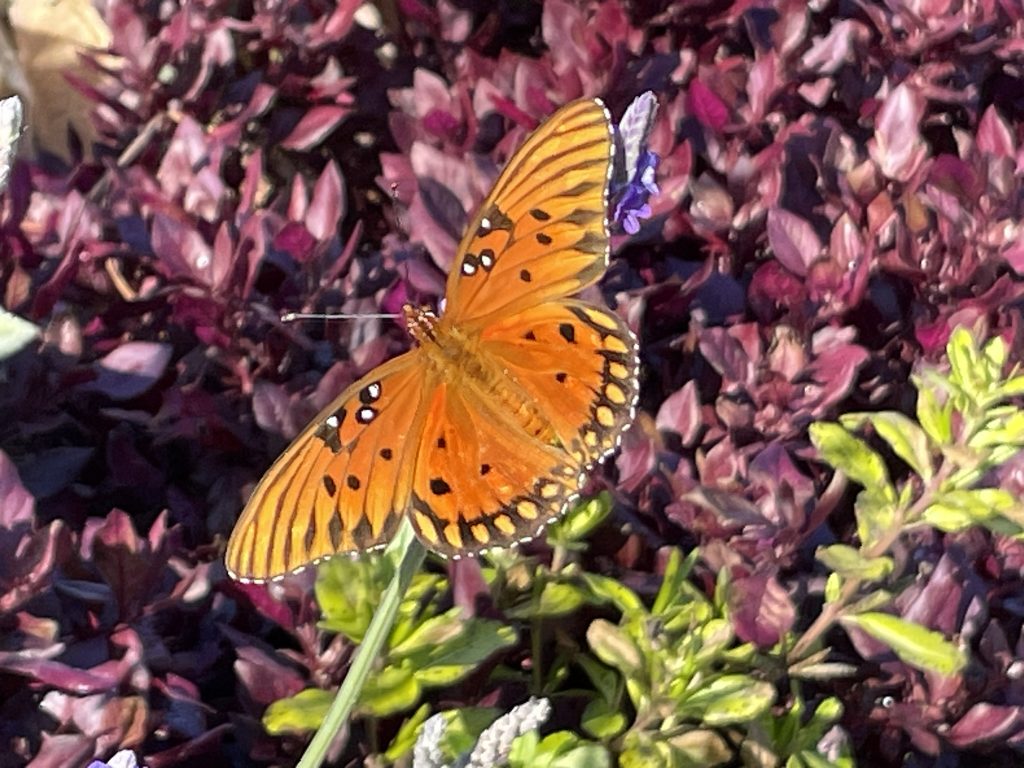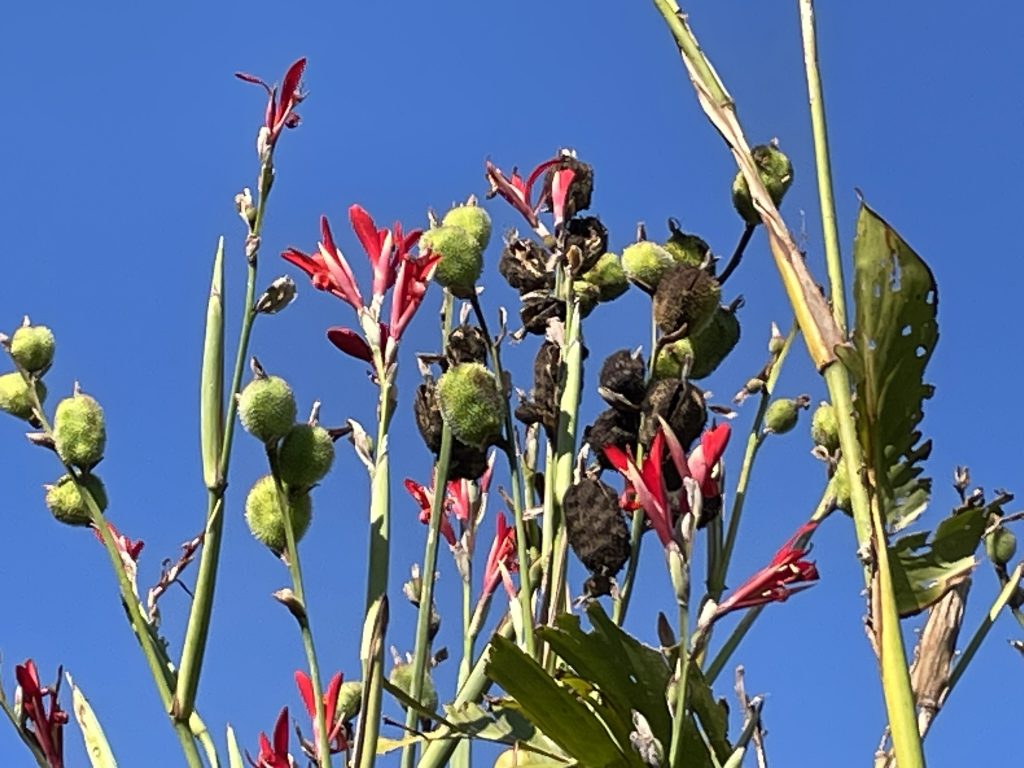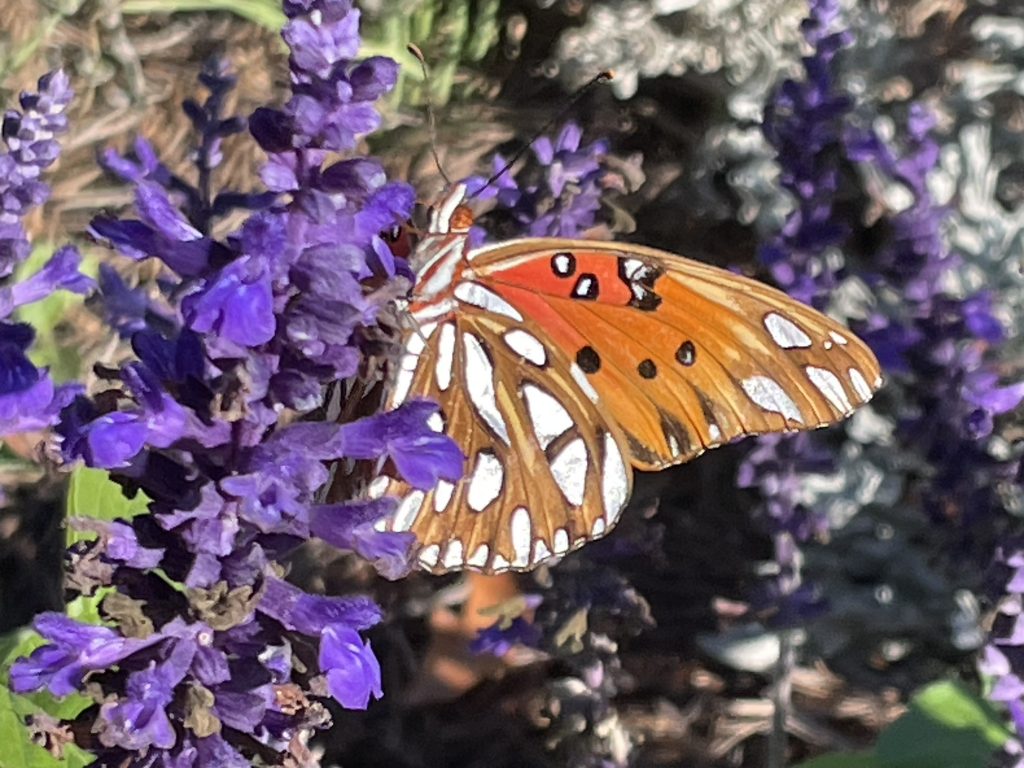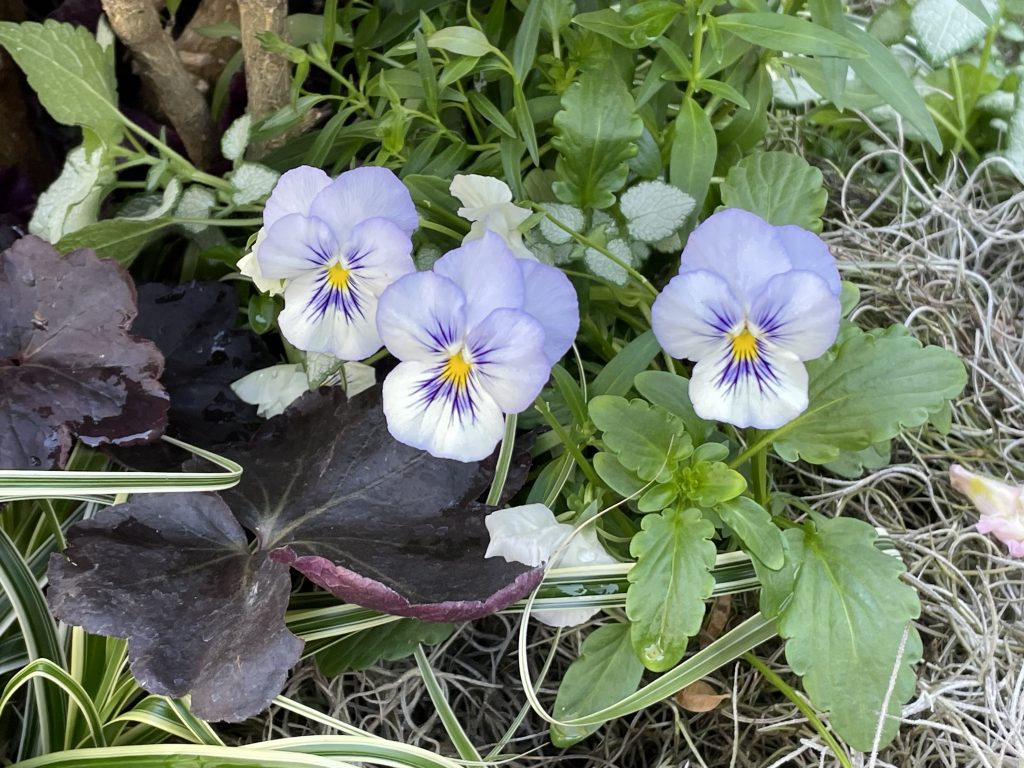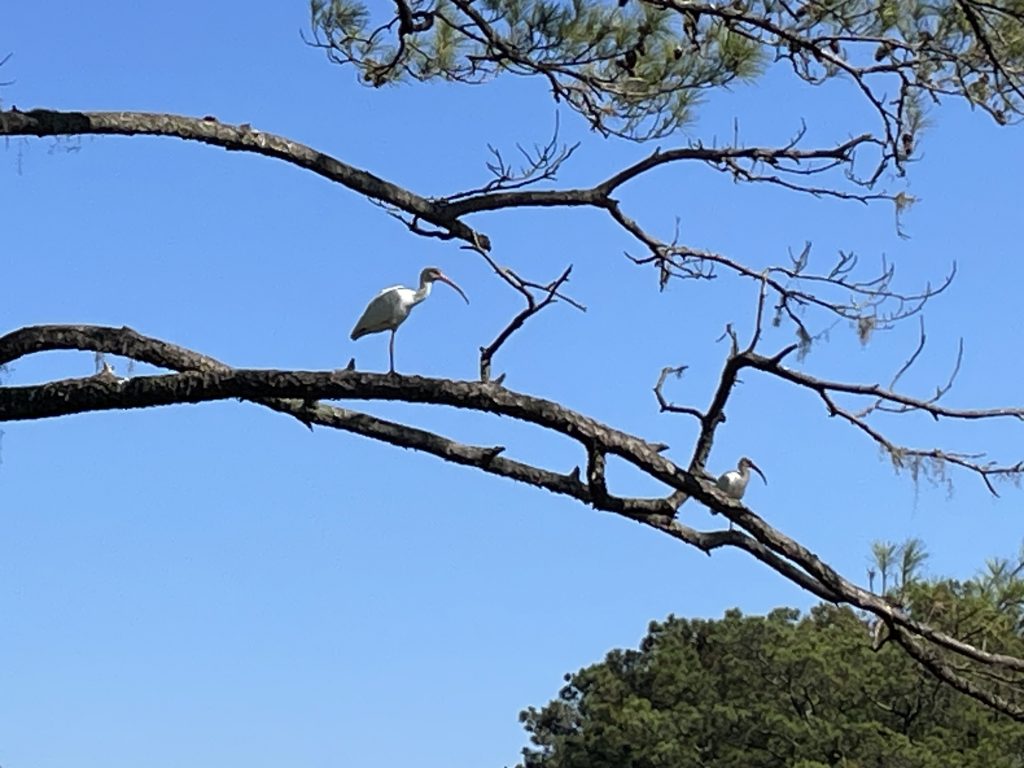Doug had previously visited Boone Hall Plantation and Gardens, so I was flying solo on this visit. Honestly, I don’t feel like he missed much on this one.
The plantation was founded in 1681 in Mount Pleasant, South Carolina by Major John Boone, who received 470 acres as a wedding gift when he married Elizabeth Patey.
Over the years the plantation passed through family members and has been sold several times. At one point, the acreage had expanded to 1,442, though current holdings are about half that.
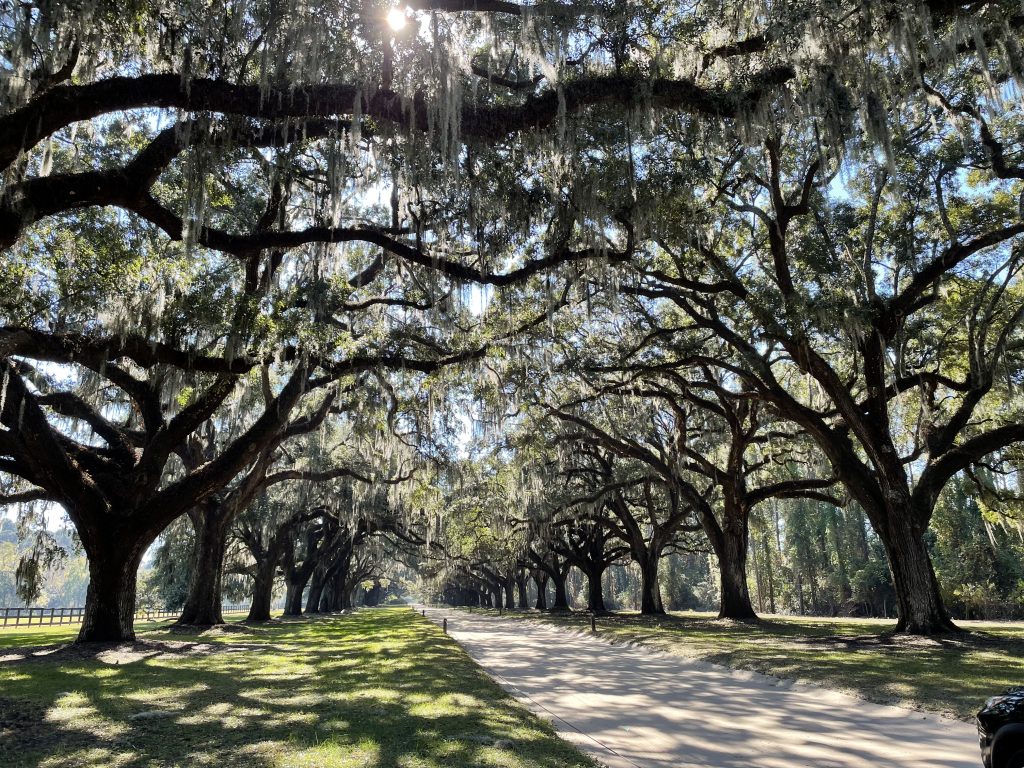
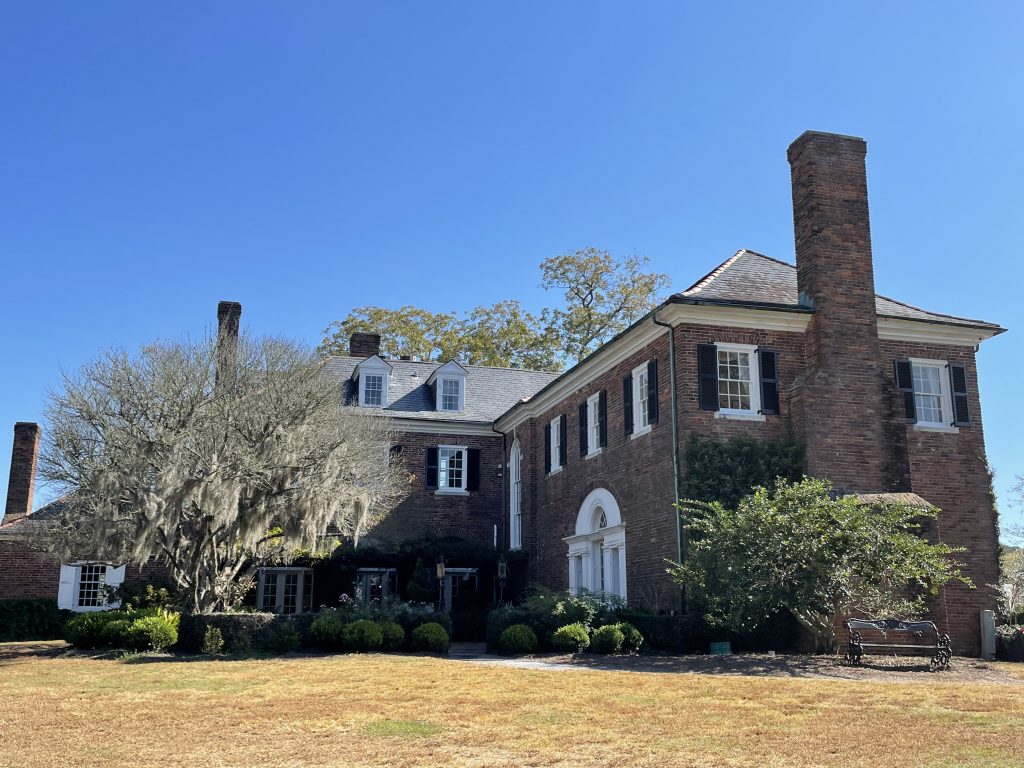
The plantation has produced agricultural crops for all of that time, making it one of America’s oldest plantations still in operation.
In the early days, when enslaved labor was plentiful, it produced cotton, rice and indigo; today it produces pecans, strawberries and a variety of vegetables.
The 10,000 square-foot Colonial Revival brick home dates from 1936, and was constructed using materials from dismantling other buildings on site.
Sadly, no pictures were allowed inside. The home today is owned by the McRae family, who still lives in the home.
Just a couple of rooms were open on the tour (in spite of the website indicating the first floor was open), and those were best described as nothing exciting.
The tour guide told joke after joke after joke, so we didn’t actually learn very much about the house or history, to be honest. His jokes were terrible, and I was increasingly frustrated as he held us captive joking but not educating. Then he asked for tips after we had paid $28 to get in and only see 3 rooms. I was glad Doug wasn’t with me for this!
The gardens in front of the house were lovely. The plantation is situated on the banks of Wampacheone Creek, which meant there was lots of birds to be seen. The house and grounds have been featured in several movies, such as The Notebook and North and South.
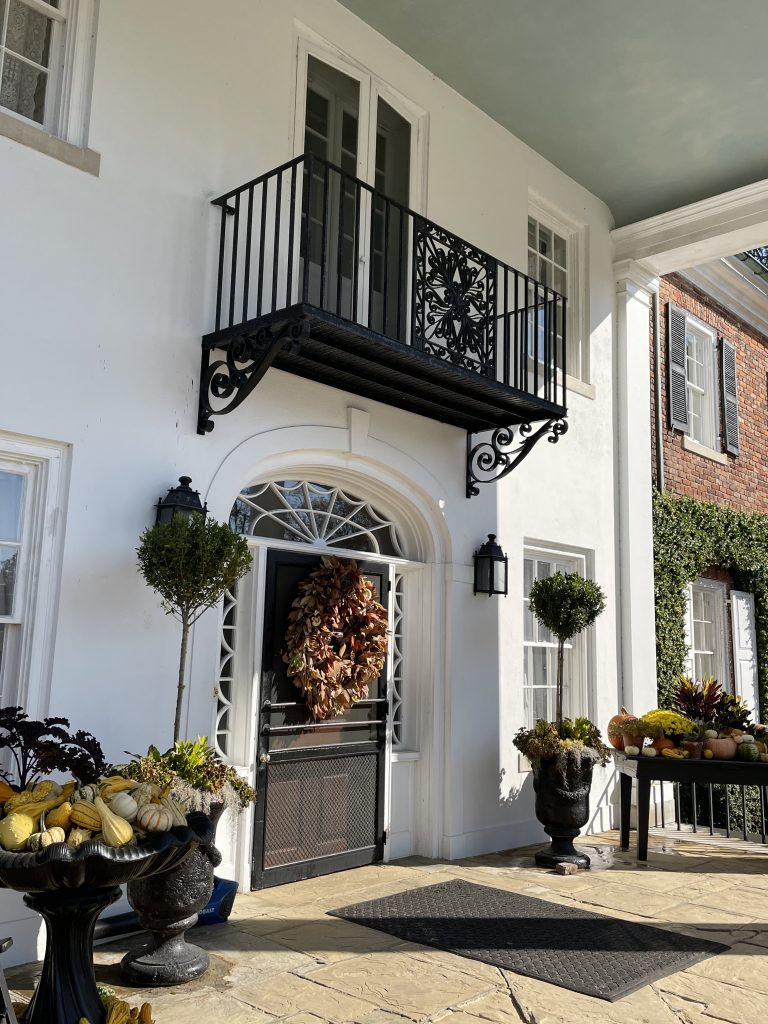
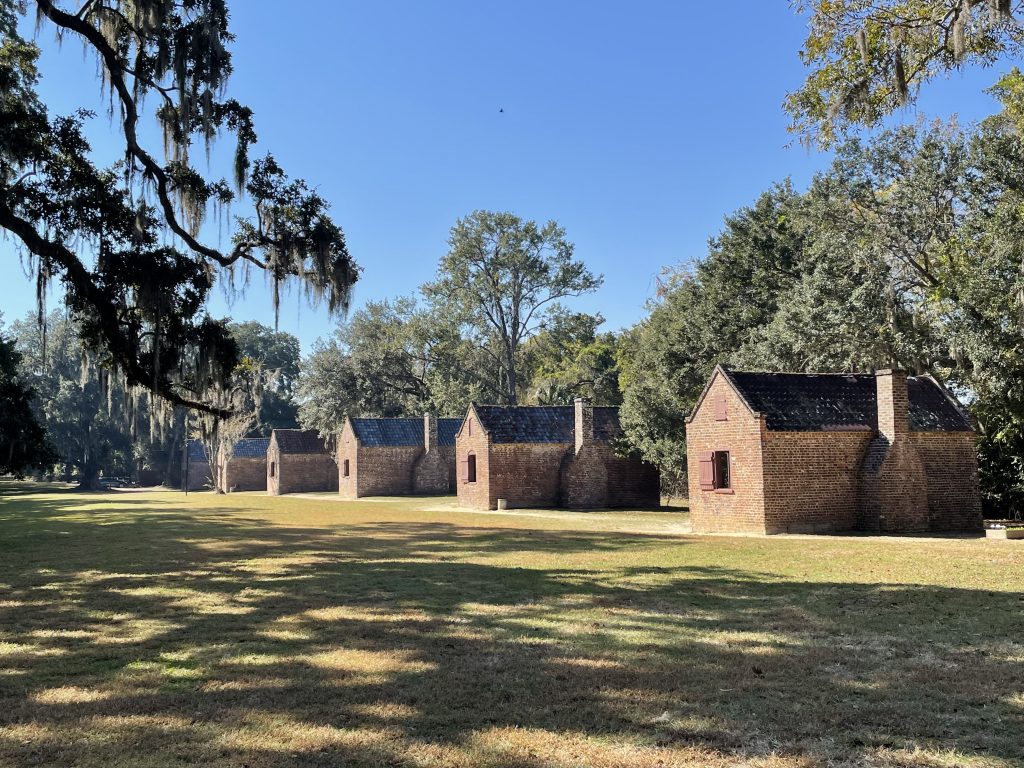
The plantation of course had a history of slavery. In addition to agricultural uses, the plantation was a producer of bricks, which obviously were made by the enslaved people.
These bricks were used not just on the plantation, but for many buildings in downtown Charleston. Four million bricks were produced by hand yearly.
Though the first slave cabins were made of wood and are long gone, brick cabins from 1790-1810 still exist on the property and are open for exploration. Subsequent to use by enslaved persons, the buildings were used by sharecroppers into the 1940s.
The enslaved population at Boone is linked to the Gullah culture (which we also explored at Pin Point and in an audio book by Pat Conroy that we listened to). Today visitors can see a Gullah presentation, which was touted by employees and on the website as “don’t miss.” I made my way over and thought that missing the demo was probably something I easily could have missed without regret. The Gullah woman told a few stories and sang some songs, but overall I didn’t feel like I learned very much.
Like many sites of this sort, Boone Plantation does a booming wedding business. As our guide pointed out, they are booked out 2½ years (one of his better jokes was “pick a date, then find a mate!”).
Ryan Reynolds and Blake Lively were married here in 2012, but in 2020 issued an apology for holding their wedding in a place built on slave labor.
